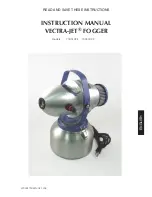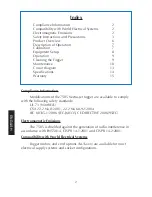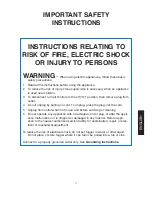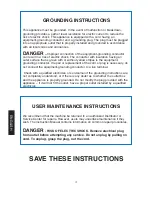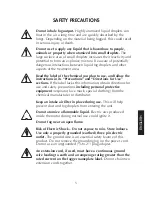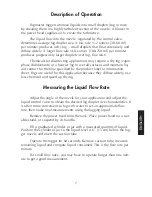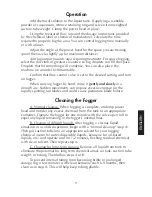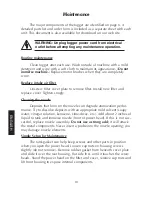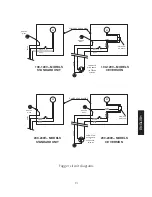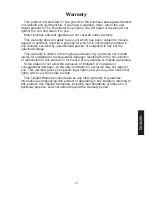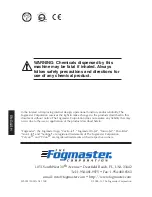
ENGLISH
operation
Add chemical solution to the liquid tank. If applying a wettable
powder or suspension, remove retaining ring and screen from weighted
suction tube weight. Clamp the power head in place.
Using the measured flow rate and the dosage instructions provided
by the chemical label or chemical manufacturer, calculate the time
required to properly fog the area. You can control fogging time manually
or with a timer.
Adjust the angle of the power head for the space you are treating
(point the nozzle slightly up for maximum distance).
Aim fog output towards area requiring treatment. For space fogging,
select the direction of greatest clearance so fog droplets can fill the space.
Droplets that hit something will condense. You can also place the
machine on a model 6100 turntable.
Confirm that flow control valve is set to the desired setting, and turn
on fogger.
When carrying fogger by hand, move it gently and slowly in a
smooth arc. Sudden movements can impose excessive torque on the
rapidly spinning fan blades and could cause premature blade failure.
cleaning the fogger
A. Normal cleanup. When fogging is complete, unclamp power
head and transfer any excess chemical from the tank to an appropriate
container. Operate the fogger for one minute with the valve open full to
expel any liquid remaining in the fogger’s internal lines.
B. Cleanup of difficult liquids. After fogging a viscous liquid,
emulsion or a solids suspension, begin with a “normal cleanup” (step A).
Then put suction tube into an appropriate solvent for your fogging
chemical (water for water-dispersible liquids, kerosene for oil-based
liquids, etc.) and operate unit for 1-2 minutes, flushing residual chemical
with clean solvent. Then repeat step A.
C. Cleanup for long-term storage. Remove all liquid from tank to
eliminate the potential for long term chemical attack on tank, suction tube
weight, or tubing. Then follow steps A or B.
To prevent internal tubing from becoming brittle in prolonged
storage, fog a few minutes with clean kerosene each 6-9 months, then
clean as in step A. This will help keep tubing pliable.
9

